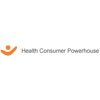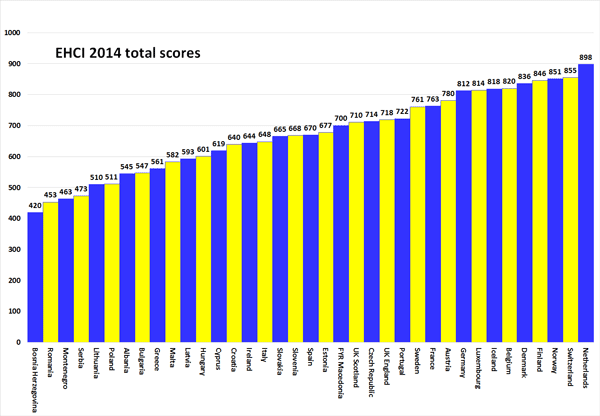The 2014 Euro Health Consumer Index
Posted: 27 January 2015 |
In spite of financial crisis, European healthcare keeps improving – but the equity gap widens…


In spite of financial crisis, European healthcare keeps improving – but the equity gap widens
The Netherlands stays on top, with many surprising moves among the 36 ranked countries
In spite of financial crisis-induced austerity measures, such as restrictions on the increase of healthcare spend, European healthcare keeps producing better results. Survival rates of heart disease, stroke and cancer are all increasing, even though there is much talk about worsening lifestyle factors such as obesity, junk food consumption and sedentary life. Infant mortality also keeps going down, and this can be observed in countries such as the Baltic states, which were severely affected by the financial crisis. But there are signs of growing gaps and inequalities. These are some important conclusions as the Euro Health Consumer Index (EHCI) 2014 was published today in Brussels in the presence of EU Health Commissioner Dr. Vytenas Andriukaitis. EHCI is the annual, independent ranking of healthcare in 36 countries.
What is less encouraging is that the tendency of an increasing equity gap between wealthy and less wealthy European countries noted in the EHCI 2013 shows with increased clarity in the 2014 edition. A record of nine countries, all Western European, are scoring above 800 points of the maximum 1000. These are followed at some little distance by three more affluent countries (Austria, France and Sweden) “not quite making it” for different reasons. After those, there is a clearly visible gap to the next group of countries, where the first CEE and Mediterranean countries start appearing. This stratification is clearer in the EHCI 2014 than in any previous edition.


The ranking
The EHCI 2014 total ranking shows The Netherlands again widening the gap to country #2 from 19 points in 2013 to 43 points in 2014, (in 2012, the margin was 50 points), scoring 898 points out of 1000, an EHCI all time high. Beginning from Switzerland (855 points) down, the EHCI 2014 shows competition at the top getting much harder.
Bronze medallists are Norway at 851 points; the very high per capita spend on healthcare services finally paying off! Finland (4th, 846 points) has made a remarkable advance, and seems to have rectified its traditional waiting time problems! Denmark (5th, 836 points) has shown a continuous rise since the start of the comparisons.
Some eastern European EU member systems are doing surprisingly well, particularly the Czech Republic and Estonia, considering their much smaller healthcare spend in Purchasing Power Parity (PPP) adjusted dollars per capita. The FYR Macedonia is making the most remarkable advance in the EHCI scoring of any country in the history of the Index, from 27th to 16th place, largely due to more or less eliminating waiting lists by implementing their real time e-Booking system!
Some key conclusions
Consumer and patient rights are improving. In a growing number of European countries there is healthcare legislation explicitly based on patient rights and a functional access to your own medical record is becoming standard. Hospital/clinic catalogues with quality ranking used to be confined to two – three countries for years; the 2014 number of nine countries hopefully is a sign that something is happening in this area, supporting active consumer choice. Medical travel supported by the new EU patient mobility directive can accelerate the demand for performance transparency.
- The financial crisis has resulted in a slight but noticeable increase of inequity of healthcare services across Europe
- There is a widening performance gap between wealthy and poor European countries
- Overall, medical treatment results keep improving
- Delays and/or restrictiveness have been common on the introduction of novel pharmaceuticals.
About the EHCI
The Euro Health Consumer Index (EHCI), the independent monitoring of healthcare in 36 countries, published its 8th edition January 27, 2015. Since 2006 this comparison of key values in healthcare, taking the patient and consumer point of view, has improved the understanding of European healthcare, empowered patients and helped addressing weaknesses. EHCI, and a wide range of disease-specific studies produced by the Health Consumer Powerhouse Ltd. (HCP) set standards for what could and should be achieved by modern, well-serving healthcare. The 50 Index productions are freely available at www.healthpowerhouse.com.
The EHCI 2014 has been supported by unrestricted grants from Medicover S.A., Belgium, and New Direction Foundation, Belgium.




